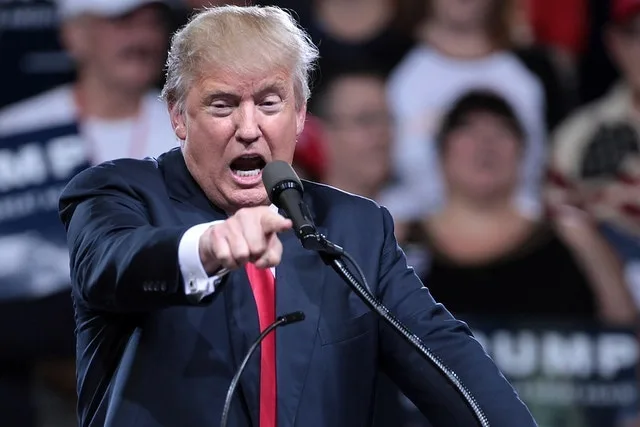In the United States, we put a lot of faith in the theory of “checks and balances” of government power. The theory goes that, since power corrupts, it is best to not give absolute power to any one government official or branch of government. In legal academic jargon, this “separation of powers” is integral in the theory of “federalism.” We talk about two kinds of “federalism” – “horizontal federalism” and “vertical federalism.”
Horizontal Federalism
Horizontal federalism is the separation of powers we’re taught about in grade school: the separation of legislative, executive, and judicial powers into three different branches of government. In theory, the legislative branch makes the laws, the executive branch enforces the laws, and the judicial branch interprets the laws. For the federal government of the United States, Congress is the legislative branch, the President is the executive branch, and the United States Supreme Court (and the other federal courts) is the judicial branch. The theory of separation of powers holds that because no person can control more than one of these three governmental powers, the other two branches of government can “check” or “balance” the unjust or corrupt exercise of power by one person or one branch of government.
In theory, an out-of-control President can only enforce the laws that Congress enacts, and only enforce them as the Supreme Court has said they can be enforced. On the other hand, an out-of-control Congress can enact whatever laws it wants, but the President could choose not to enforce them. The Court, as referee, gets the final say on whether any branch of government (including itself, hmmm) is abusing its power and infringing on the principle of separation of powers. All of this is, again, in theory, tempered by the bounds of power set forth by the United States Constitution, which “constitutes” the bounds of power that each branch of the federal government can wield.
This brings us to reflect on how well this system of checks and balances will hold up in the next couple years. President-elect Trump has threatened to use his position without restraint, without concern for the limits of the federal executive power. To be fair, he isn’t starting a new trend here. Since 2001, both President Bush and President Obama have expanded the federal executive power, without much “check” by either Congress or the Courts. Trump will take office with a Congress controlled by his own political party. Different people will fill the executive and legislative branches, but their ideology and agenda will be very similar. Further, there is already one vacancy for Trump to fill on the United States Supreme Court. It’s not really an overstatement to say that President Trump – or at least, his political ideology – will control all three branches of the federal government. So much for separation of powers.
No Salvation in U.S. Constitution
But wait, there is still the United States Constitution, which provides a limitation on what the federal government can do! Yes, the United States Constitution sets limits to government power, such as limitations on certain government actions that infringe free speech, or equal protection under the law. If President Trump attempts, for example, to ban all Muslims from the United States, civil liberties advocates will likely successfully get the courts to strike down that ban as a violation of freedom of religion. But the United States Constitution is only as protective of our rights as the United States Supreme Court says it is. And the United States Supreme Court will be controlled by a majority who believe the Constitution should only mean what it did back in the 18th Century. Clever lawyers working for an administration that wants to “ban all Muslims” should be able to figure out a non-religious criteria to apply that would achieve nearly the same result as “banning all Muslims.” So much for the Constitution getting in the way of absolute power.
Vertical Federalism
Unfortunately, when we think of separation of powers, we usually only think of this separation between the legislative, executive, and judicial branches of government. In other words, we only think about the “horizontal” aspect of federalism, and we ignore the “vertical” aspect of federalism. The theory of separation of powers, at least in the United States, also separates powers between governments at different scales: federal, state, and local. (“International” should be on that list too, but that’s another story.) Law students are taught that the states inherited all the sovereign powers. In other words in the American Revolution, the state legislature replaced the king. Then, about a dozen years later, the people of the states agreed to separate some of that plenary state power and give it to a new federal government, created by the United States Constitution. “Vertical federalism” usually refers to this separation of powers between different scales of government: what is within the power of the federal government, and what is within the power of state governments.
Removing Local Government from Vertical Federalism
Unfortunately, for a number of reasons, there was little formal discussion of the power of local governments1 (e.g., cities) during the constitution making period at the end of the 18th Century. This lead to a number of theories about what powers local governments had. By the beginning of the 20th Century, and in response to efforts by late 19th Century populists and progressives to use local lawmaking to resist the expanding power of the corporate state, the United States Supreme Court ended any further discussion about local governments having any role in “vertical federalism” by pronouncing that local governments were merely creatures of the state, and the state could control (or even abolish) local governments at will (the legal academic jargon for this theory is “Dillon’s Rule”). For a recent example of this theory in action, check out Michigan’s Emergency Manager law, where the governor can declare a city to be financially distressed and abolish the elected city council and appoint an emergency manager. Don’t be surprised to find that Michigan’s law has been used mostly against cities where the population is predominantly black; state control over local governments has a long history as a form of control over people of color.
We don’t usually think of the relative power of local, state, and federal governments when thinking about separation of powers and “checks and balances” in government. But given the nearly complete control of all three branches of the federal government by Trump’s ideology for the next couple years, we’d be wise to remember that separation of powers is supposed to be more than just dividing up the branches of the federal government. It also has that “vertical” component, where power is divided between governments at different scales.
The Clash of Horizontal and Vertical Federalism
This puts two conflicting legal theories head-to-head. One theory holds that, since federal law is the “supreme law of the land,” it always trumps state or local laws. This is “preemption,” and it often is interpreted to mean that anytime Congress enacts law, state and local governments are powerless to make any law that contradicts that federal law. Under this theory, the next Congress could not just repeal the federal Patient Protection and Affordable Care Act (aka “ObamaCare”) but it could also go further and enact a federal law that forbids state governments from enacting laws that protect health care consumers. Thus, Congress could ban state efforts to enact single-payer healthcare. When preemption is an absolute, and the power of the federal government is broad, then the federal government can control local and state lawmaking by preventing measures that protect people from corporate power.
The Right to Local Community Self-Government
The other legal theory, deriving from texts like the Declaration of Independence that pre-dated the United States Constitution, is that governments exist to protect peoples’ rights, health, safety, peace, happiness, and general welfare. Thus, when a law protects human rights or ecological rights, that law cannot be preempted by a less protective law. Preemption in this context violates the foundational purpose of government. We refer to this legal theory as the “right of local community self-government,” and it has historical antecedents in the 19th Century theories of “right to local self-government,” “Home Rule,” and the 20th Century theory of “new judicial federalism.”
Under the Right of Local Community Self-Government, state or local governments could enact laws to protect health care consumers that would be immune from preemption by a federal law that bans such local laws. This theory is essential to preserving the “vertical” aspect of separation of powers, particularly when the “horizontal” separation is non-existent because the same ideological forces control all three branches of the federal government.
Please help us advance Community Rights in 2017!
1 The discussions may not have been “formal” but they were energetic and real. The “regulator wars” including the so-called “Whiskey Rebellion,” “Fries Rebellion,” and “Shay’s Rebellion” were more about the primacy of community over state and federal affairs than about taxes, as most history books claim. In Maryland, for instance, there was an active and formal debate over whether state and federal elected representatives were required to get specific instructions from the local communities before voting on or proposing legislation. There is a wealth of history to show that vertical federalism has a significant pedigree. The American Aurora by Richard Rosenfeld documents this debate by gathering contemporary newspaper articles demonstrating that, for instance, Shay’s Rebellion was a rejection of John Adams’ Massachusetts constitution that was the model for the second federal constitution. Rosenfeld reveals the embrace of the 1776 Pennsylvania model of unicameral legislature, which included community oversight of the legislature (no supreme court, but a Council of Censors made up of locally elected representatives with power to nix laws not in accord with the revolutionary constitution), and no executive branch with power to veto enactments of direct community representatives.


